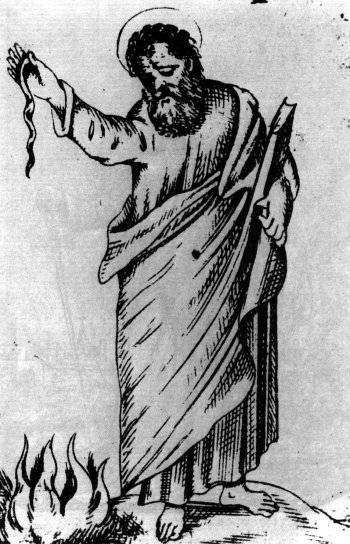Recensione su San Paolo dei serpenti (Sellerio, Palermo 1996) pubblicata su The Times del 30 luglio 1996
by Norbert Ellul Vincenti

This is not a book about St Paul as such about the traditions connected with him and Malta. And not about all the traditions, but around those having to do with serpents and folklore.
Who is Montinaro? No other than an actor who has worked with Lattuada, Comencini and Zeffirelli. Of no mean standing, you could say, as an actor.
He is a student of cultural anthropology and is interested in particular in the dialectics of religious phenomena.
This is a book that is respectful of the depositum and the texts and documents. The author has carefully read all that there is to be read and carefully noted it.
He acknowledges help from Can. John Azzopardi of the Cathedral Museum, the Collegiate Chapter, the Commission for the Museum of the Cathedral, Mdina, Mr Patrick Galea for some illustrations, and Alfonso M. Di Nola, “anthropologist and historian of religions”.
The same Alfonso M. Di Nola has a longish preface, in which he pays tribute to the work of his student.
The book not only makes claim to scientific procedure, but is actually so. This is a careful piece of work, well worth reading and studying. As Di Nola himself shows, the author is not given to interpretative games or wild exhibitionism one so often meets hiding under scientific names. He writes, of course, from a scientific and lay point of view.
The first chapter is dedicated to Saint Paul of the serpents and headed with the words of the Acts of the Apostles: Et cun evasissemus tunc cognovimus quia Melita insula vocabatur (and as we escaped we knew the island was called Malta.)
The second stage concerns the voyage and the miraculous waters connected with the saint in Ispica, Siracusa, Reggio Calabria etc. The author even considers Warnecke’s theory. In Malta, the matter concerns Ghan Razul where water issued either to slake the thirst of the sailors or so that they could all be baptised.
The next chapter is devoted to the neutralising of the viper in all the places connected with the traditions. The author has a fascinating section on the “serpari”, the man, throughout history, who capture and keep snakes and help to heal people.

Finally the author dedicates his full attention to the Grotta (cave) and the miraculous healings. In a concluding section, he goes over the ground covered and draws some conclusions ending with the comment that the feast of St Paul is now celebrated twice in Malta, through a “direct contact with the saint which is almost fanatic, but without any elements of magic”.
The book is the 88th of a series called La diagonale. The cover shows one of the panels from the XV century polyptych of the Museum of the Cathedral in Rabat, showing St Paul against a glorious gold background.
